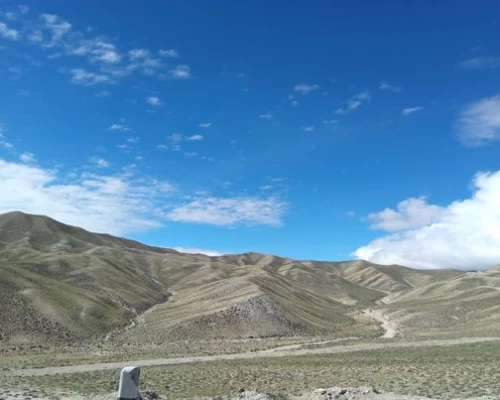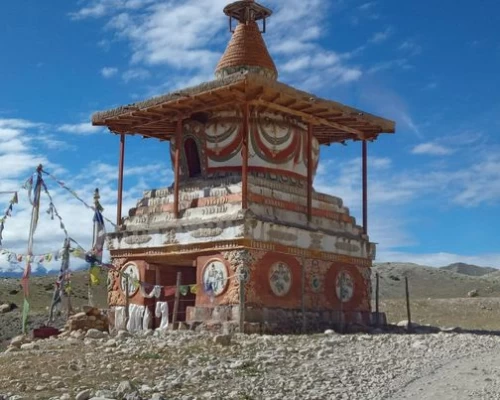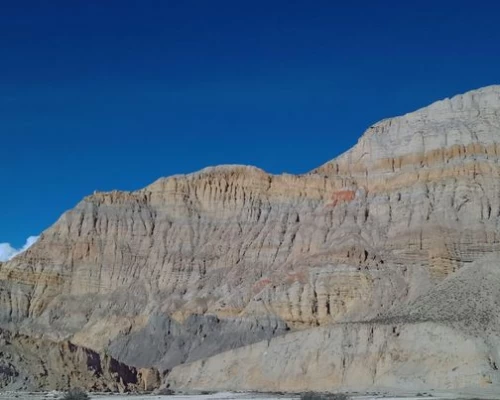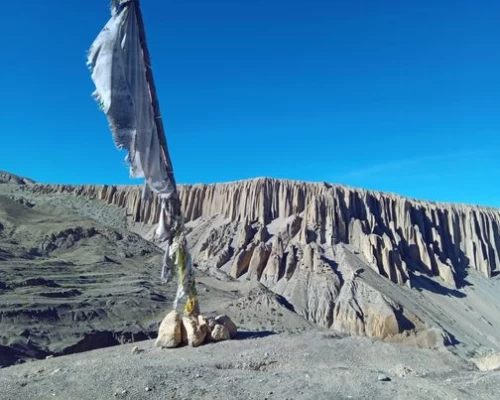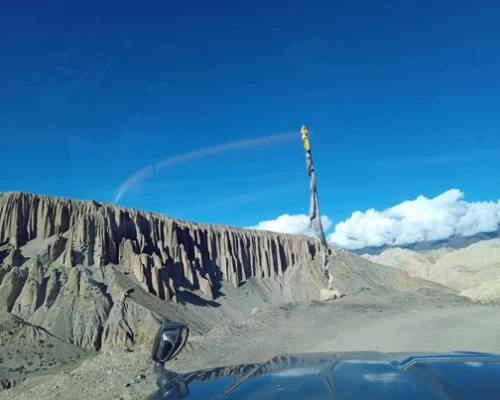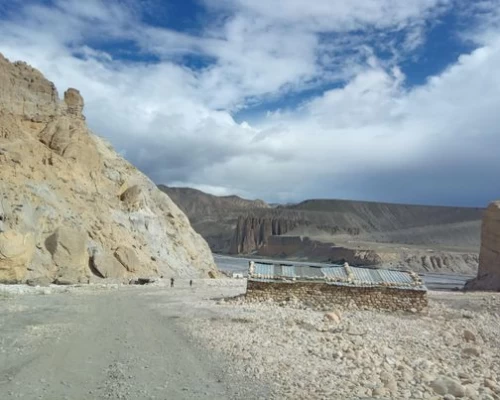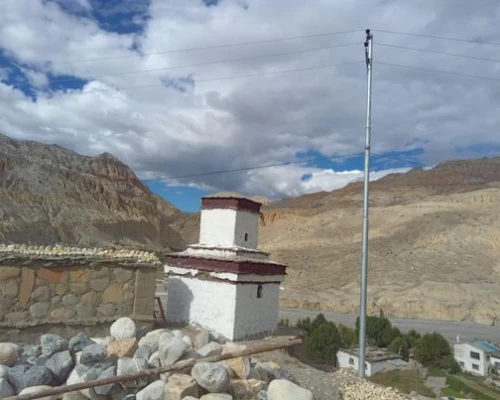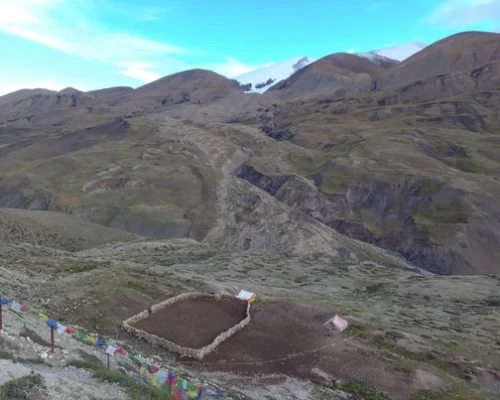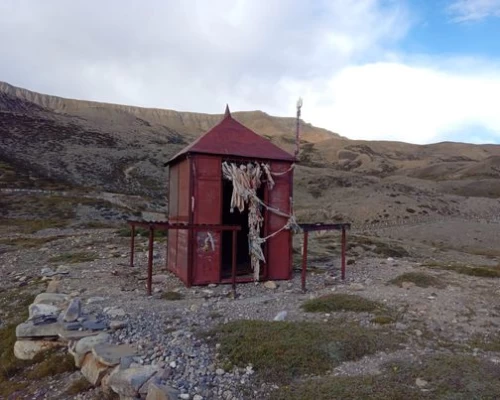One of the most mesmerizing trekking destinations is the Upper Mustang Trek, renowned for its natural beauty, cultural richness, and remoteness in Nepal. It is also profoundly influenced by Tibetan culture, Buddhism, ancient trade routes, and unique indigenous traditions.
The Upper Mustang Trekking Trail leads to the remote, hidden pockets of the far northern villages, nestled between the Annapurna and Dhaulagiri ranges. Additionally, it is the most recommended but restricted off-the-beaten-path trek in Nepal.
The Upper Mustang Region of Nepal is a mythical heritage and a breathtaking landscape area. Earlier, off limits to foreigners were not allowed to enter this zone. Nowadays, hikers must meet specific requirements like an Upper Mustang Restricted Area Permit, an Annapurna Conservation Area Permit, and trek with a government-registered trekking guide.
As you walk along these historic trails, you will encounter centuries-old monasteries, traditional mud-brick houses, and curved cliffs, offering a glimpse into a rich culture, traditions, and festivals with the typical lifestyles of locals.
The 14-day Upper Mustang Trek is a breathtaking adventure that takes you into the wild lands of the Himalayas. This trek connects the mysterious landscapes of the ancient kingdom of Mustang in Nepal.
Unlike other treks in Nepal, the Upper Mustang Region offers a surreal trans- Himalayan landscape characterized by dramatic rock formations, deep canyons, and colorful cliffs.
During the trek, you will also explore the untouched natural environment of the trek through the upper Mustang Himalayan Region. There are no luxurious hotels or contemporary facilities available because the area has not been fully modernized. But you will be able to take in the mesmerizing natural beauty, the amazing desolation, and the extraordinary creation of giant stones.
In the Upper Mustang Trekking Trail in Nepal, you will travel through Kagbeni, Chele, Syangboche, and the walled city of Lo Manthang, where ancient caves, royal palaces, and Buddhist traditions still thrive.
History of Upper Mustang Trek
The Upper Mustang Region of Nepal is a region steeped in Tibetan culture, ancient trade routes, and a historic Buddhist heritage. For decades, Upper Mustang has welcomed adventurers through the ancient kingdom of Lo, a once-restricted region that remained off-limits to foreigners until 1992.
In addition, the region was ruled by Lo kings who maintained their autonomy under Nepalese rule until the abolition of the monarchy in 2008. Even today, Lo Manthang remains the cultural and historical heart of Upper Mustang and has become popular among trekkers looking to travel to Nepal's last forbidden Kingdom of Nepal.
Despite modernization, Upper Mustang has preserved its authentic Tibetan heritage and celebrated Buddhist festivals like the Tiji Festival. That reason makes it one of Nepal's culturally unique trekking destinations in Nepal.
With its rich history, unspoiled landscapes, and ancient monasteries, the Upper Mustang Trek is not just a trek. It is also a journey through time, allowing trekkers to experience the hidden Himalayan kingdom of Nepal.
Why is it also called the Lo Manthang trek in Nepal?
Lo Manthang is the ancient walled capital of the Lo Kingdom. It is located in the restricted Upper Mustang region of Nepal. Furthermore, this cultural Mustang trek takes you to many historically significant destinations in Lo Manthang, known for its Tibetan-influenced heritage, centuries-old monasteries, royal palaces, and unique desert-like landscapes. So, Lo Manthang is often called this because it is the main attraction of the Upper Mustang trek.
Is Upper Mustang Trek Suitable for me?
If you are physically fit, this is an arduous grade hike at a moderate pace. You walk to a Charang and ascend high altitude in Lo Manthang at 3,800 m. This is where we get the best close-up of many surrounding views like the Tibetan plateau, including mountains like Nilgiri, Tilicho, and Bhrikuti.
Furthermore, the views of Mustang from Lo Manthang are jaw-dropping, and you should not miss them at any cost. Please get involved in some good physical activity for at least 1 or 2 months before your Mustang trek venture.
We experience 12 days of point-to-point walking with full porterage throughout- you need only carry your daypack. In addition, you can do this Upper Mustang trek even if you have no previous experience, but we recommend you partake in regular exercise or hill walking. If this is so, then you should do some physical preparation before you begin this trip.
Why is Upper Mustang called a Restricted Trek in Nepal?
The Upper Mustang trek is considered a restricted trek in Nepal due to its unique culture and environmental significance. Additionally, it is also located in the rain shadow of the Himalayas, and the region was once a separate kingdom. Also, the region is culturally preserved and heavily influenced by Tibetan Buddhism.
Furthermore, the upper Mustang is a highly regulated area, and hikers must obtain a special permit to enter this off-the-beaten-path destination. This restriction also serves to maintain the spiritual sanctity and cultural integrity of the region.
How do you prepare for the high-altitude Upper Mustang Trek?
Preparing for the Upper Mustang Trek requires a combination of physical fitness, proper gear, and an understanding of the region's high-altitude conditions. Before the trek, you will focus on building endurance and stamina through regular exercise like hiking, running, and cycling.
Additionally, stay hydrated by drinking plenty of water. Being dehydrated can worsen altitude problems.
Furthermore, the altitude increases gradually while trekking in the Upper Mustang. So, don't rush; instead, take your time and allow your body to adjust to the high altitude to avoid altitude sickness and fatigue.
Eat nutritious foods to maintain your energy levels during the journey. Consult your doctor about using medications like Diamox to avoid altitude sickness.
In addition to physical preparation, packing the right gear is another essential for a successful trek to Upper Mustang. A good quality hiking boot, warm clothing, and sleeping bags are suitable for cold temperatures in higher altitudes.
It is also recommended to bring high-SPF sunscreen, a first aid kit, and water purification tablets.
What Makes Upper Mustang Trek Special in 2025 & 2026
The Upper Mustang Trek is one of Nepal’s most exclusive and mesmerizing journeys, offering a rare glimpse into the hidden Buddhist kingdom of Lo Manthang. This restricted trekking region requires a special permit, ensuring an untouched and culturally rich experience. In 2025 and 2026, this trek remains a top choice for adventurers seeking remote valleys, ancient caves, dramatic cliffs, and unique stone formations in the rain-shadow region of the Himalayas.
Upper Mustang Region, a restricted and protected region in Nepal, offers a unique trekking experience rich in ancient Buddhist culture. Trekkers need a special permit and a registered guide to explore this remote area, often called the "Last Forbidden Kingdom." The region is dotted with ancient monasteries, vibrant festivals like the Tiji Festival (2025/2026), and the traditional lifestyles of the Loba people.
The dramatic landscapes include the Kali Gandaki River Valley, the world’s deepest gorge, with breathtaking views of the Annapurna and Dhaulagiri ranges. Following the historic salt trade route between Nepal and Tibet, travelers pass through villages like Kagbeni, Jomsom, and Muktinath. Unique attractions include mysterious sky caves, yak pastures, local cheese production, and the medieval walled city of Lo Manthang, making Upper Mustang a truly unforgettable adventure.
Jomsom: Gateway to the Upper Mustang Region
Jomsom is a scenic town in the lower Mustang region. It serves as the gateway for hikers heading to the upper Mustang and the Annapurna Circuit. Jomsom is a famous stop for those who exploring the trans-Himalayan region.
In addition, this village is also known for its desert-like climate with mesmerizing views of the Nilgiris Peaks, and it offers a unique blend of Tibetan culture and Nepali traditions.
Ancient Hill Caves and Panoramic Mountain Views to the South.
The ancient village of Mustang is also called the northernmost village of Nepal. This name reflects its isolated location beyond the towering peaks of the Annapurna and Dhaulagiri ranges.
The cliffs of mysterious ancient Hill caves are believed to have faces that are thousands of years old. This is the most natural attraction of the region. These sky caves are found near Chhoser, Samar, and Dhakmar.
Also, holy masters and rinpoches have meditated in these ancient mountain caves in the upper Mustang region. These caves, some of which are believed to be thousands of years old. Also, it is a haven for Buddhist monks and spiritual leaders seeking solitude and enlightenment.
Kali Gandaki River, Gorge, and fossil
During the Mustang trek, you will cross one of the Kali Gandaki rivers. Which is the most famous in the world and flows through the Kali Gandaki Gorge? Also, this gorge is the deepest gorge in the world. During a cultural Mustang trek, sacred fossils representing incarnations of Lord Vishnu are found on the banks of the river. These stones are sacred to both Hindus and Buddhists.
Furthermore, on the trail, you will explore the stunning views of the Annapurna and Dhaulagiri Mountain ranges with the spectacular backdrop of the trek. The Kali Gandaki Gorge is not only a geological marvel but also a spiritual and cultural symbol for the local people.
Local culture, traditions, and lifestyles of the Sherpas
The local culture of the Mustang fully influences the Tibetan heritage. where Sherpas are playing a pivotal role in protecting ancient traditions. The Sherpas of Mustang are known for their strong ties to Buddhist rituals and practices. which is reflected in the many monasteries, stupas, and prayer wheels scattered throughout the region.
Upper Mustang cultural trek, you will explore the celebrated festivals like Tiji, which is the victory of good over evil. The Mustang community also follows traditional farming practices, cultivating barley and wheat in dry areas and raising livestock such as cattle, sheep, and goats in high-altitude environments.
The Mustang community also follows traditional farming practices, cultivating barley and wheat in dry areas and raising livestock such as cattle, sheep, and goats in high-altitude environments.
Why Choose Mount Glory for Your Upper Mustang Trek?
Mount Glory Treks is a reputable trekking company with decades of experience in the trekking sector. As a trekking company, our main goal is to provide a satisfying experience by presenting information about the rich cultural heritage and natural beauty of Nepal.
You choose Mount Glory Treks for your short Upper Mustang trek, we ensure a seamless, well-organized, and enriching trekking experience. In addition, we specialize in restricted area trekking in Nepal, handling all necessary permits and logistics professionally. Our local experienced guides, who have in-depth knowledge of the Tibetan-influenced culture, ancient monasteries, and hidden sky caves, ensure that you get an authentic and immersive journey.
Furthermore, Mount Glory Treks also regulates and oversees tours of helicopters, wildlife, cultural, and heritage sites. We also offer customized itineraries for both groups and individuals, allowing you to organize your vacation based on time, interests, and financial constraints.
How Much is the Cost for the Upper Mustang Trek?
The cost of the Upper Mustang Trek Package ranges from 1650 USD to 2050 USD, depending on Group Size. Different factors also determine the price, like permits, transportation, guides, porter services, accommodations, and meals. Since Upper Mustang is a restricted trekking region in Nepal, trekkers must obtain a Restricted Area Permit (RAP), which is one of the expensive trekking permits in Nepal. That is why the Upper Mustang Trek costs slightly more than other trekking routes. Additionally, other major expenses include domestic flights from Pokhara-Jomsom-Pokhara.
Furthermore, this cost includes a professional trekking guide, experienced Porters, food, and logistics, Permits, domestic flights, accommodation, and local transport, but personal expenses such as travel insurance, extra snacks, WiFi, hot showers, and tips are not covered in our trip package.
Mount Glory Treks offers a group breakdown cost for the Upper Mustang Trek in the years 2025 & 2026. Please follow our breakdown table below for more info.
| No of Trekkers | Cost Per Person | Inquiry |
| 2-2 | USD 2050 | Inquiry Now |
| 3-5 | USD 1950 | Inquiry Now |
| 6-9 | USD 1790 | Inquiry Now |
| 10-20 | USD 1650 | Inquiry Now |
Note: If travelers are a group of more than 20 or Solo trekkers want to join, contact our operations team for details cost information.

.webp)

